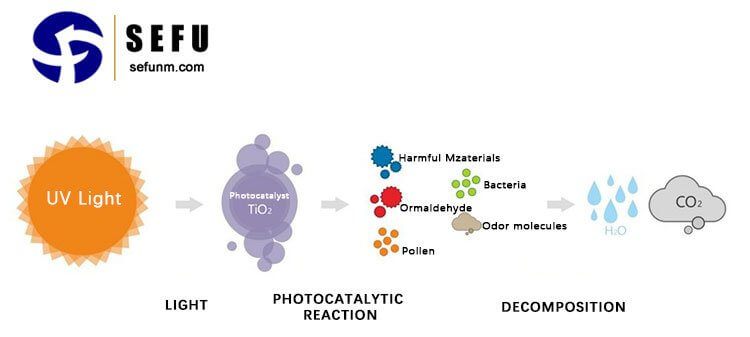Introduction:
Silicon carbide ceramic foam filters are a popular choice for a range of industrial filtration applications. Recently, these filters have also emerged as a crucial tool in the field of photocatalysis. In this article, we explore the case and application of silicon carbide ceramic foam filters in photocatalysis. We will explore the benefits of their use and provide an overview of the technology behind these filters.
What is Photocatalysis?
Photocatalysis is a process through which light energy is harnessed to activate a catalyst. The catalyst then facilitates the reaction of target molecules in the presence of light. The reactions that occur in photocatalysis can be used for a range of useful applications, including water purification, air purification, and the breakdown of organic matter.

Silicon Carbide Ceramic Foam Filters:
Silicon carbide ceramic foam filters are specifically designed to filter out unwanted particles from liquid or gas streams. What makes these filters unique is their open-cell structure, which allows liquid or gas to flow freely through the filter while capturing any particles that are present.
The open-cell structure is created by using a foam-like ceramic matrix and impregnating it with silicon carbide. This impregnated foam is then exposed to high-temperature sintering, which generates a ceramic filter with a very high surface area, making it one of the most effective ways to filter out particles and impurities.
Application of Silicon Carbide Ceramic Foam Filters in Photocatalysis:
Below are some of the key applications of silicon carbide ceramic foam filters in photocatalysis:
1. Water Purification:
One of the most promising applications of photocatalysis is in water purification, where it can help to break down pollutants and purify the water. As water enters a photocatalytic reactor containing silicon carbide ceramic foam filters, it comes into contact with a photocatalyst material and a light source, thereby activating the catalyst. This process breaks down the pollutants in the water and produces clean water suitable for human consumption.

2. Air Purification:
Similarly, silicon carbide ceramic foam filters can also be used to purify the air we breathe. By exposing polluted air to photocatalysts, the filters can help break down the pollutants in the air, making it safe to breathe.
3. Decomposition of Organic Pollutants:
Photocatalysis can also be used to decompose organic matter, such as waste, animal feces, and other dead vegetation. By using silicon carbide ceramic foam filters as part of the process, the decomposition can be accelerated, reducing the amount of time needed to decompose organic matter.
Case Studies:
1. Degradation of Phenol in Wastewater
One of the studies conducted to demonstrate the effectiveness of silicon carbide ceramic foam filters used them to purify an industrial wastewater stream. During the experiment, the wastewater was passed through a filter containing the silicon carbide foam matrix, which was impregnated with a commercial grade photocatalyst. The results showed that the system was highly effective in reducing the concentration of the phenol in the wastewater, with removal efficiencies of up to 87%.
2. Removal of Heavy Metal Ions in Water
Another application of silicon carbide ceramic foam filters in photocatalysis is the removal of heavy metal ions in water. A study conducted on the efficacy of the silicon carbide filters found that they were effective in removing toxic heavy metal ions, such as lead, cadmium, and copper, from water. In the study, the filters successfully captured up to 99% of the hazardous metal ions in the water, making it safe to drink.
Conclusion:
The increasing need for sustainable technologies that can reduce our dependence on non-renewable resources has led to the adoption of silicon carbide ceramic foam filters in various industries. The migration of this technology into the field of photocatalysis presents exciting possibilities for improved air and water quality, as well as the accelerated decomposition of organic matter. As demonstrated by the case studies discussed above, the use of silicon carbide ceramic foam filters in photocatalysis can be highly effective, demonstrating the potential of this technology to support a cleaner, healthier future.

